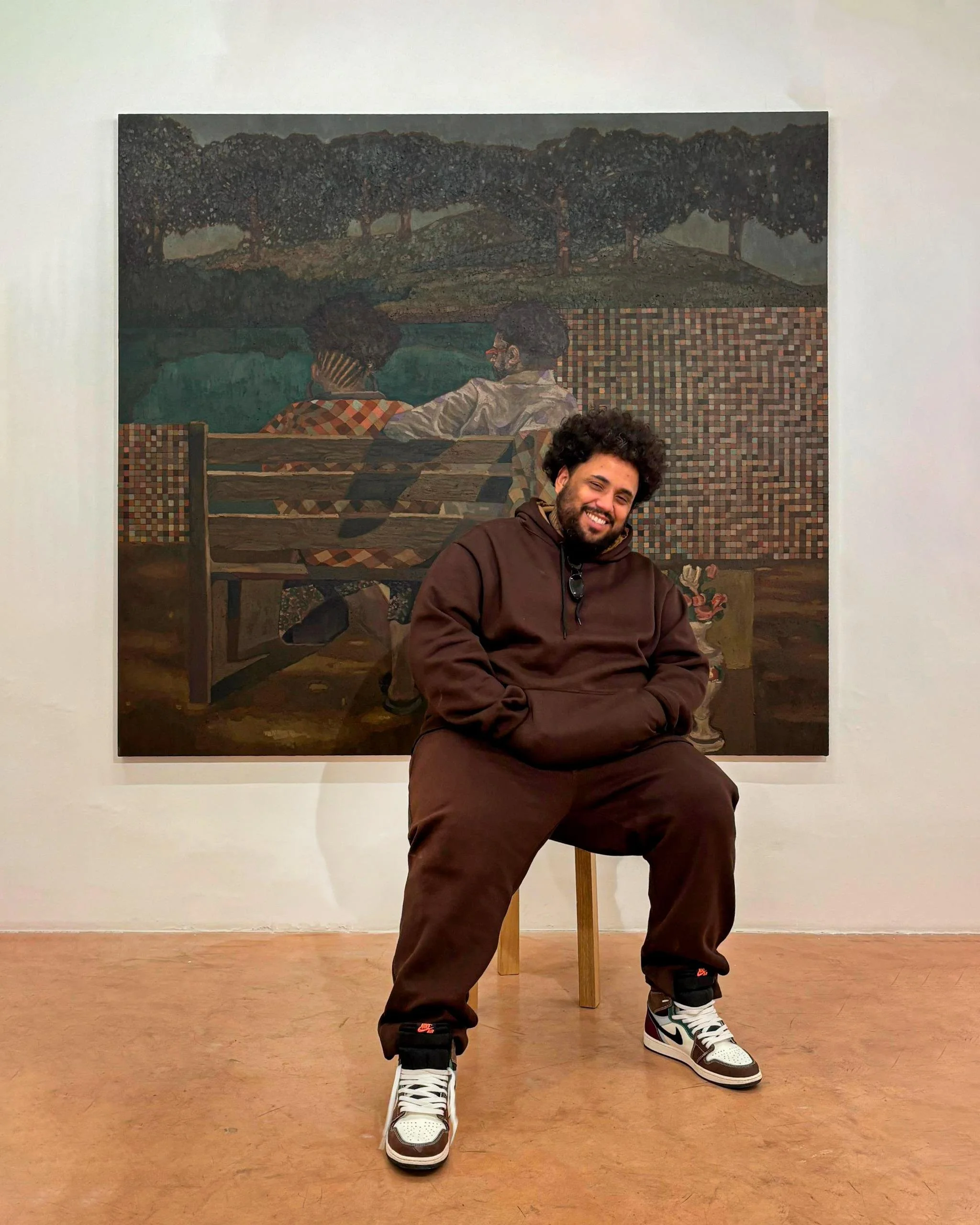dialogue
Miguel Afa | Artist
October 2025
6 min read
Beginning his journey in the streets of Complexo do Alemão, Rio de Janeiro, Miguel Alfa sees graffiti as “the greatest painting school in the peripheries of the world.” His 24-year relationship with the walls of the city shaped a practice that extends beyond image-making into a way of producing thought.
Today, his studio work carries the weight of gesture, materiality, and memory, moving beyond the visual codes of graffiti while still rooted in the intensity of lived experience. Miguel describes his colors as “mental, immaterial, and metaphysical”, a palette of memory and affection that invites viewers into intimacy, care, and recognition.
His recent exhibition at Paço Imperial holds deep symbolic meaning: bringing the realities of Rio’s peripheries into an institutional space where diverse audiences, including public school students, can see themselves reflected. For Miguel, this exchange affirms that every brushstroke is both personal and universal, an embrace of memory, place, and humanity.





